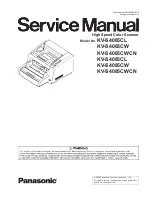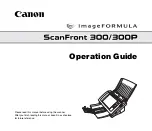
Troubleshooting
R&S
®
TSME6
64
User Manual 4900.0033.02 ─ 06
Remarks to the troubleshooting flow-diagram
*
For "full auto-IP" and "partial auto-IP" operating mode, following hints are valid:
●
R&S TSME6 IP addresses are unique and physically in the network range
(169.254.0.0 netmask 255.255.0.0).
●
In "full auto-IP" operating mode, user has no control on IP addresses physically
used.
**
If the application using R&S TSME6 is not running as administrator, following prob-
lems may occur:
●
The static ARP table conflicts with the dynamic configuration of R&S TSME6.
Clean up the ARP table or run the application as administrator to verify if the con-
figuration is working.
●
The host (respectively R&S TSME6) is not be able to send and receive a multicast
frame to IP address 239.192.1.5 port 16962.
The following information may provide further solutions to frequent connection prob-
lems.
Does the host provide a Gbit LAN connector and support 9k jumbo frames?
In some cases the Windows network adapter properties show that 9k are enabled, but
in fact the adapter does not support the setting. You can check this using this com-
mand:
netsh interface ipv4 show interfaces
The "MTU" value in each line indicates the maximum transmission unit. Make sure the
LAN adapter connected to the R&S TSME6 supports an MTU larger than 9000.
If the 9k jumbo frames cannot be enabled in the Windows dialog box, try the following
command:
netsh interface ipv4 set subinterface [Idx] mtu=9000
store=persistent
where [Idx] is the network Id of the LAN adapter
For more information on the required settings see
It may be necessary to verify and apply the MTU setting for IPv6 too as some drivers
will use the minimum MTU value set between IPv4 and IPv6, even if only IPv4 is used.
This may be the case when some third party tools are installed on the PC (e.g. proxy,
firewall).
The commands to check and fix the MTU values for IPv6 are respectively:
Guide to solve instrument connection problems
















































